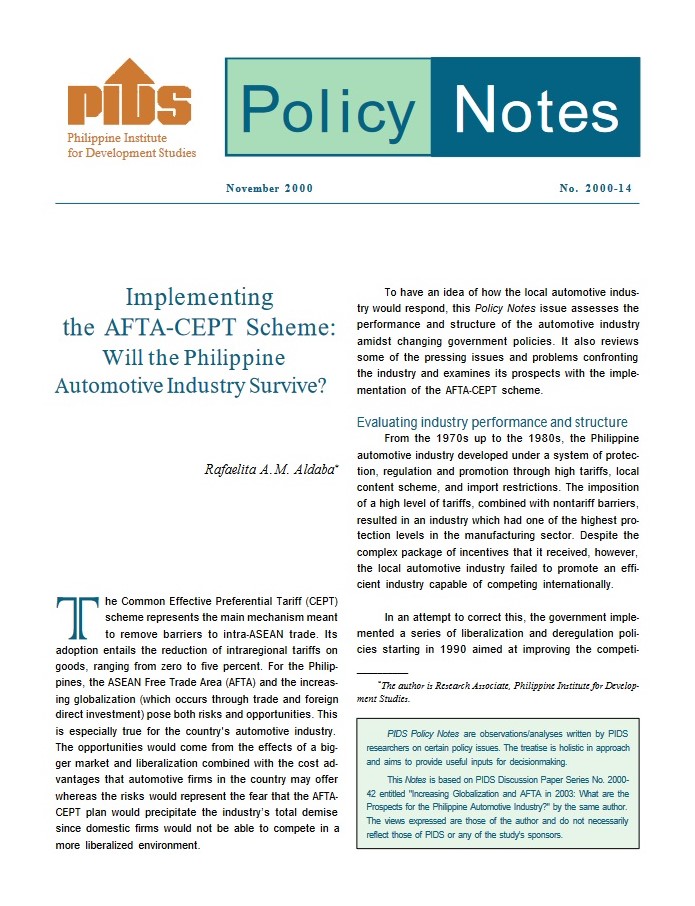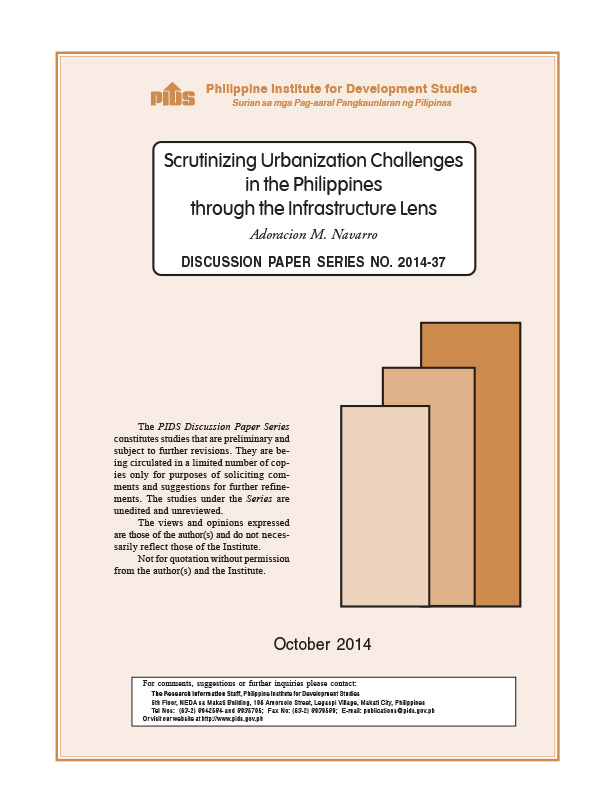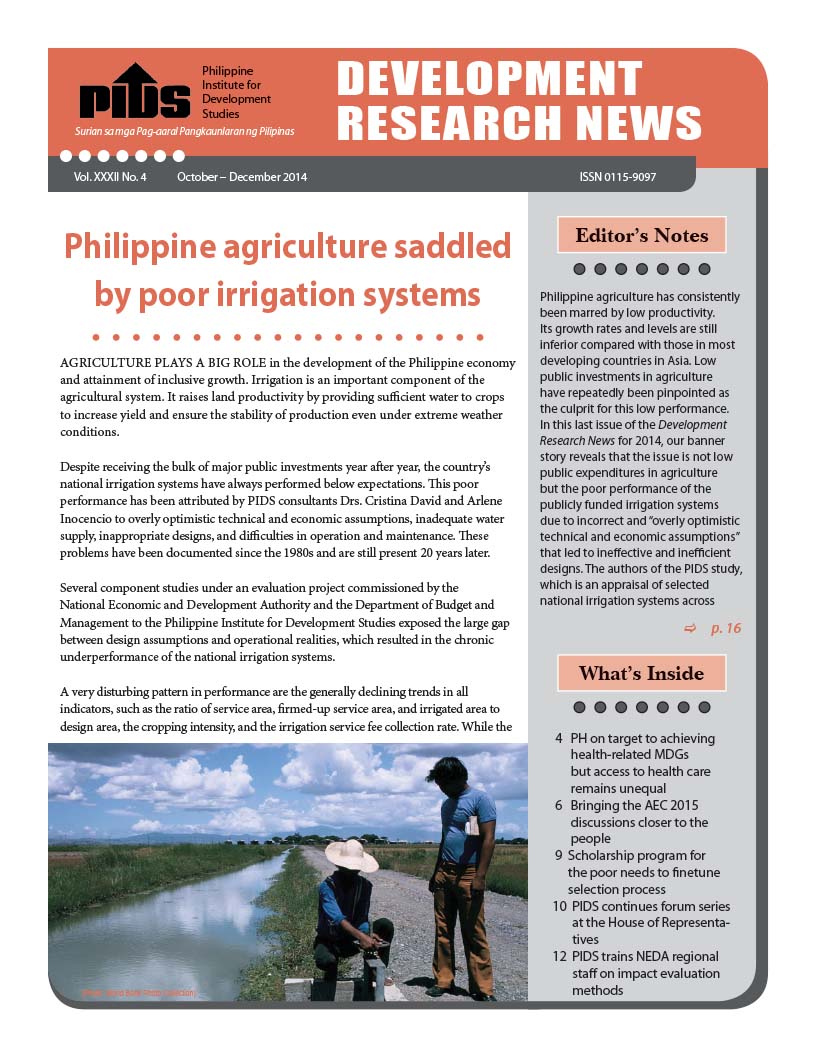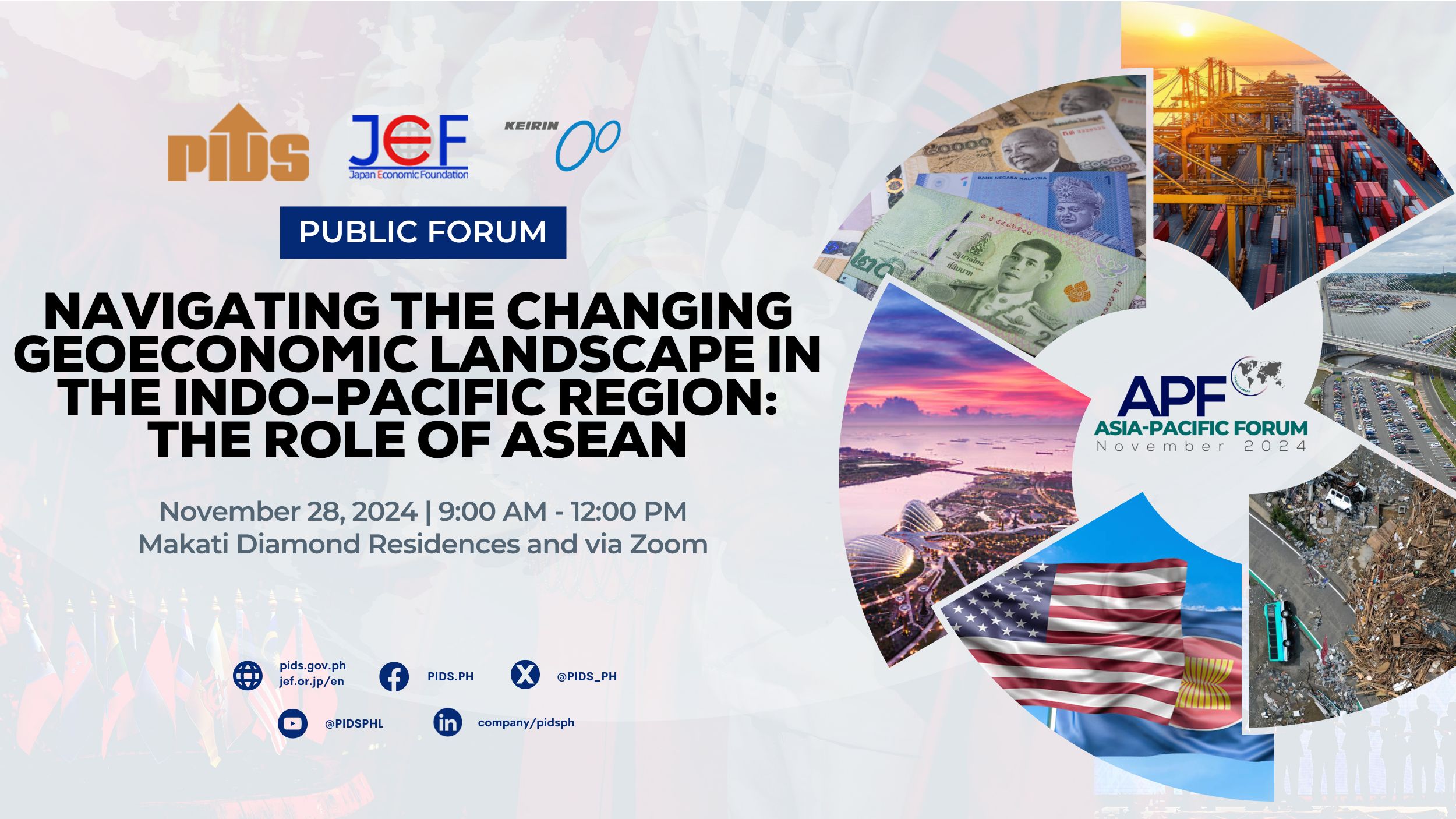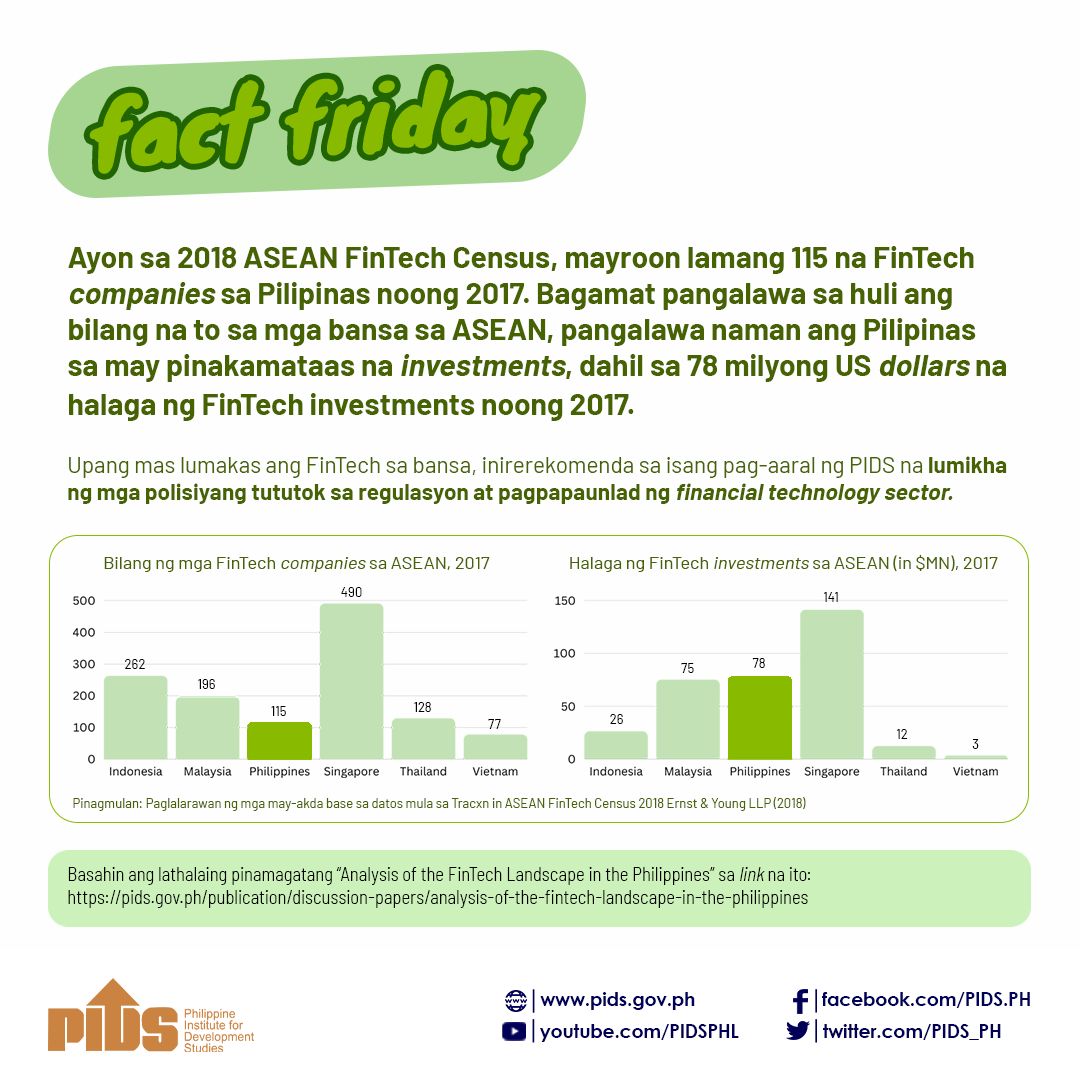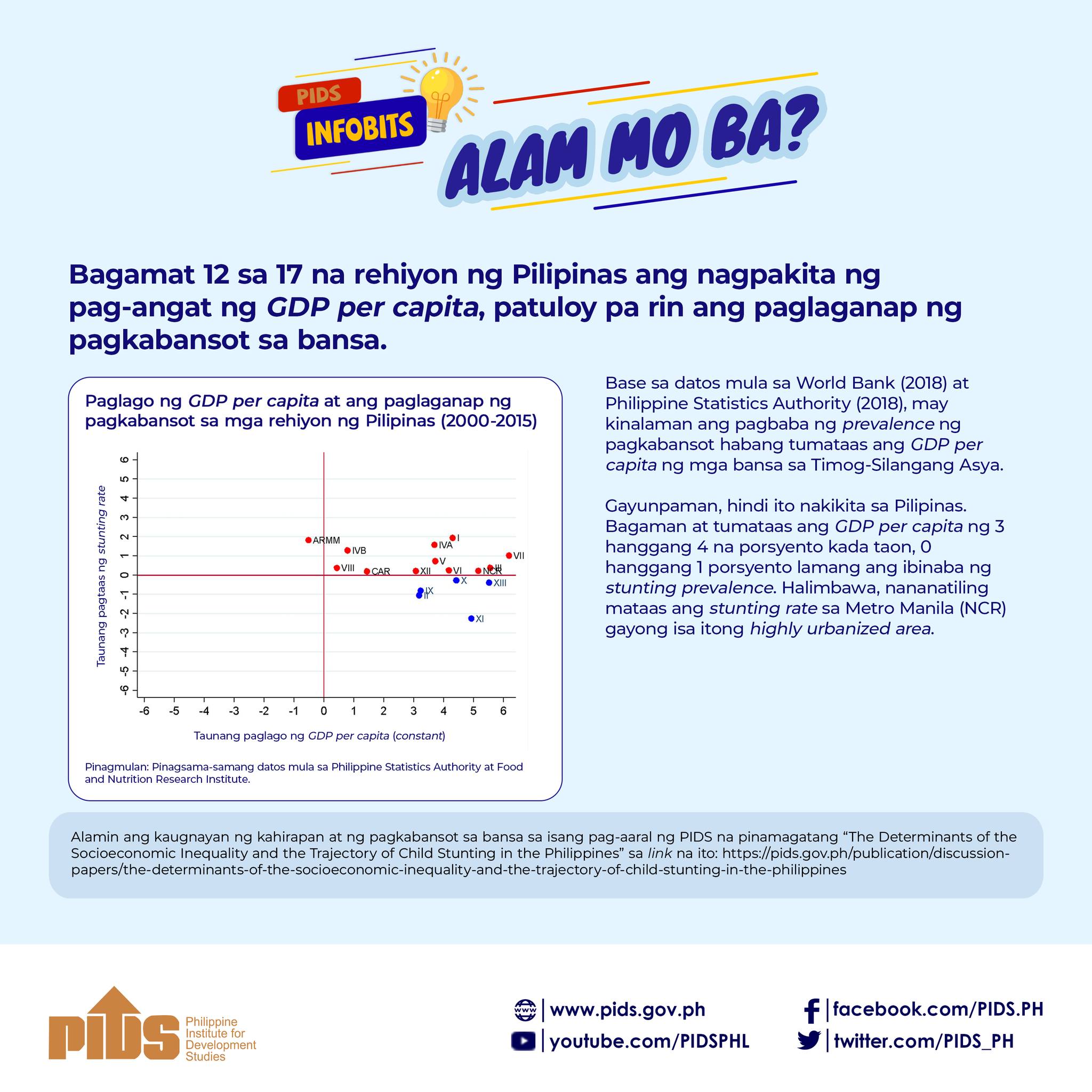Quality of infrastructure in the Philippines is second to the last in the ASEAN region. This was disclosed by Dr. Adoracion Navarro, Senior Research Fellow of the Philippine Institute for Development Studies (PIDS), during the forum "Financing Infrastructure in the Philippines " held at PIDS.
“In the Global Competitiveness Report 2012-2013 of the World Economic Forum, the Philippines is ranked 98th among 144 countries in terms of quality of overall infrastructure. Philippine infrastructure is worse than Cambodia’s,” Navarro said.
In the ASEAN region, the only country the Philippines overtook was Viet Nam that placed 119th, the ASEAN nation with the poorest quality of infrastructure. Ranked first in the region is Singapore, which is second overall among 144 countries. Malaysia was ranked 29th; Brunei Darussalam, 43th; Thailand, 49th; Cambodia, 72th; and Indonesia; 92th. Lao PDR and Myanmar are not included in the ranking.
The Philippines got the lowest rank in terms of quality of port infrastructure (120th) and air transport infrastructure (112th). This is clearly worse than Cambodia’s 69th and 75th ranking in port and air transport infrastructure, respectively.
Navarro attributes this poor turnout to underinvestment in infrastructure. In 2012, only 11 percent of the total appropriated budget for infrastructure was spent—a scenario that has not changed since 2010.
Navarro said the decreasing reliance on official development assistance (ODA) loans also contributed to the low quality of Philippine infrastructure. In 2012, ODA loans for infrastructure was more than US$5 million, which was relatively smaller than the figure in 2008 which was over US$6 million.
As of 2013, there are 21 projects in the pipeline under the Public-Private Partnership scheme. Required investments in 18 of these projects are projected at US$5 billion. Three of the 21 projects do not have cost estimates yet.
Navarro challenged stakeholders in the financial sector to take advantage of the liquid financial market given the huge projects costs in infrastructure and the single borrower limits faced by banks in direct lending. Given the maturity of lending capital by Philippine banks (10-15 years) and the long gestation of infrastructure projects (25-30 years), the government could facilitate the creation of credit enhancements for infrastructure bonds that can be issued by private issuers.
“The government should also organize a group of experts from both the private and public sectors to formulate clear mechanisms and an institutional setup to mobilize bank resources for infrastructure financing,” said Navarro.
“In the Global Competitiveness Report 2012-2013 of the World Economic Forum, the Philippines is ranked 98th among 144 countries in terms of quality of overall infrastructure. Philippine infrastructure is worse than Cambodia’s,” Navarro said.
In the ASEAN region, the only country the Philippines overtook was Viet Nam that placed 119th, the ASEAN nation with the poorest quality of infrastructure. Ranked first in the region is Singapore, which is second overall among 144 countries. Malaysia was ranked 29th; Brunei Darussalam, 43th; Thailand, 49th; Cambodia, 72th; and Indonesia; 92th. Lao PDR and Myanmar are not included in the ranking.
The Philippines got the lowest rank in terms of quality of port infrastructure (120th) and air transport infrastructure (112th). This is clearly worse than Cambodia’s 69th and 75th ranking in port and air transport infrastructure, respectively.
Navarro attributes this poor turnout to underinvestment in infrastructure. In 2012, only 11 percent of the total appropriated budget for infrastructure was spent—a scenario that has not changed since 2010.
Navarro said the decreasing reliance on official development assistance (ODA) loans also contributed to the low quality of Philippine infrastructure. In 2012, ODA loans for infrastructure was more than US$5 million, which was relatively smaller than the figure in 2008 which was over US$6 million.
As of 2013, there are 21 projects in the pipeline under the Public-Private Partnership scheme. Required investments in 18 of these projects are projected at US$5 billion. Three of the 21 projects do not have cost estimates yet.
Navarro challenged stakeholders in the financial sector to take advantage of the liquid financial market given the huge projects costs in infrastructure and the single borrower limits faced by banks in direct lending. Given the maturity of lending capital by Philippine banks (10-15 years) and the long gestation of infrastructure projects (25-30 years), the government could facilitate the creation of credit enhancements for infrastructure bonds that can be issued by private issuers.
“The government should also organize a group of experts from both the private and public sectors to formulate clear mechanisms and an institutional setup to mobilize bank resources for infrastructure financing,” said Navarro.

